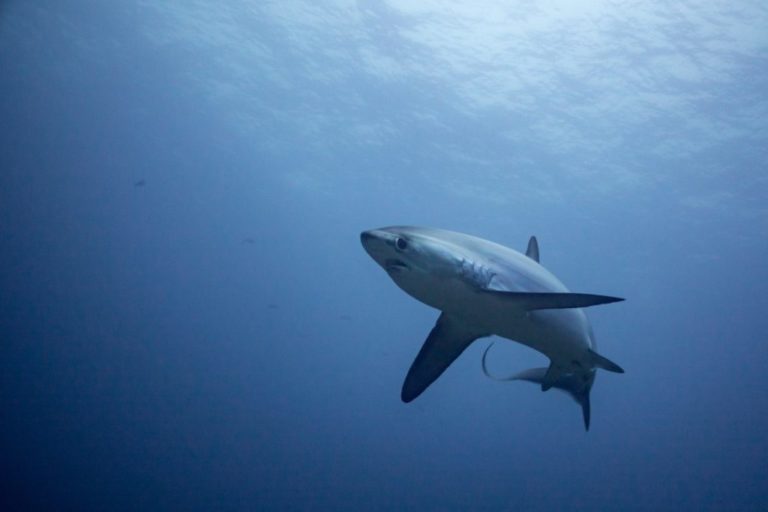Malapascua in the Philippines is most famous for the almost certain chance to see the primarily pelagic Thresher Shark. But, this little island getaway, north of Cebu and home to 4,000 people, has much more to offer.
The incredible macro diving, and diverse abundance of vibrant, often mythical looking sea creatures is a reason in itself to grab your camera and head to Malapascua. Let’s dive in and tell you everything you need to know about scuba diving in Malapascua.
Table of Contents
Best Dive Sites in Malapascua / Island Dive Map
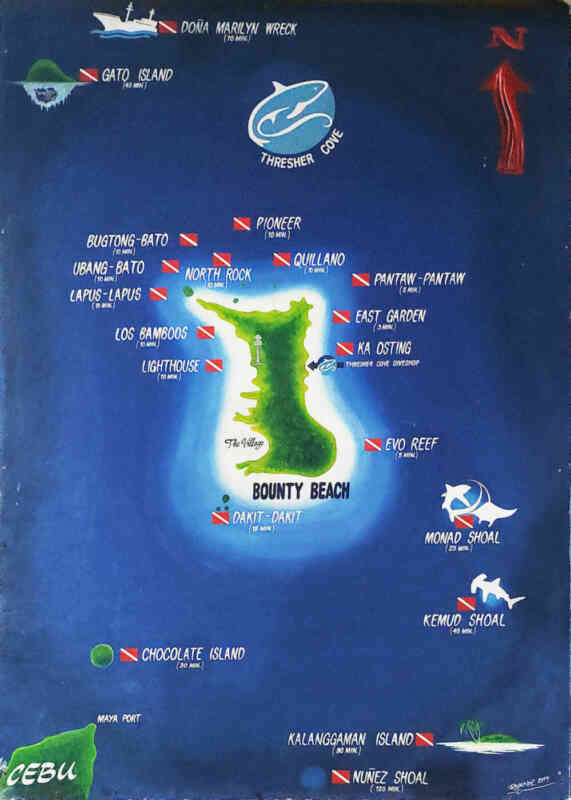
Monad Shoal
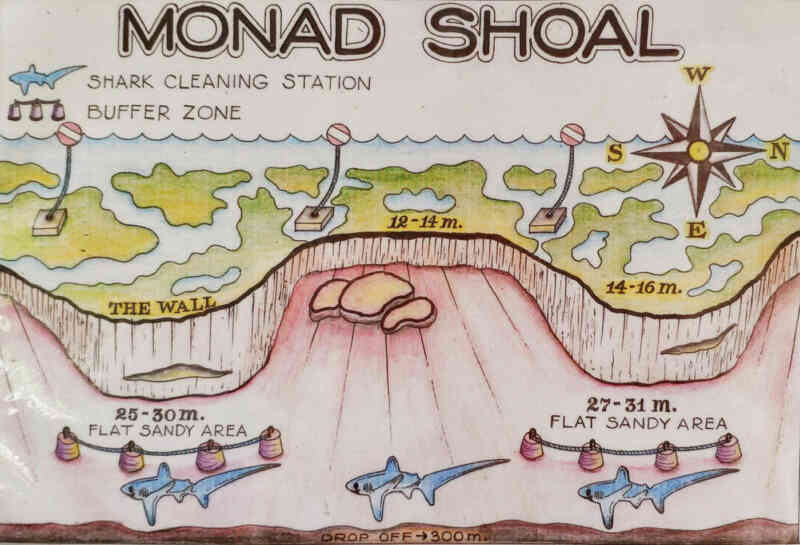
Distance – 25-30 minutes
Min. Depth: 14 meters
Max. Depth: 40 meters
Monad Shoal is a Marine Protected Area and selected to be the Philippines “First Shark and Ray Sanctuary”. A sea mount of about 1.5km long, almost same size of Malapascua, rising from the edge of 200m drop-off.
The top of the shoal ranges from 14m to 26m, with a drop-off exceeding recreational dive depths at 40m. This site may seem rather plain as few corals grow on this current swept shoal however this is one of the Best Places in the world for seeing Thresher Sharks in shallow water, almost every day in whole year-round.
Both the pelagic common Thresher Sharks (Alopias vulpinus), they are a regular visitor to the many cleaning stations found on the slope between 22-30 meters and sometimes they visit on top of the reefs.
Some think the sharks frequent the shoal to the advantage of cleaning stations allowing wrasse and other fish to pick parasites and dead skin from their skin gills, and mouths.
Because of its proximity to the deep open ocean, other pelagic species like giant Manta rays and Devil rays depending on season are also often sighted here. We follow strict diving rules at Monad to minimize the impact of divers and to increase the chance of shark encounter.
Kalanggaman Island
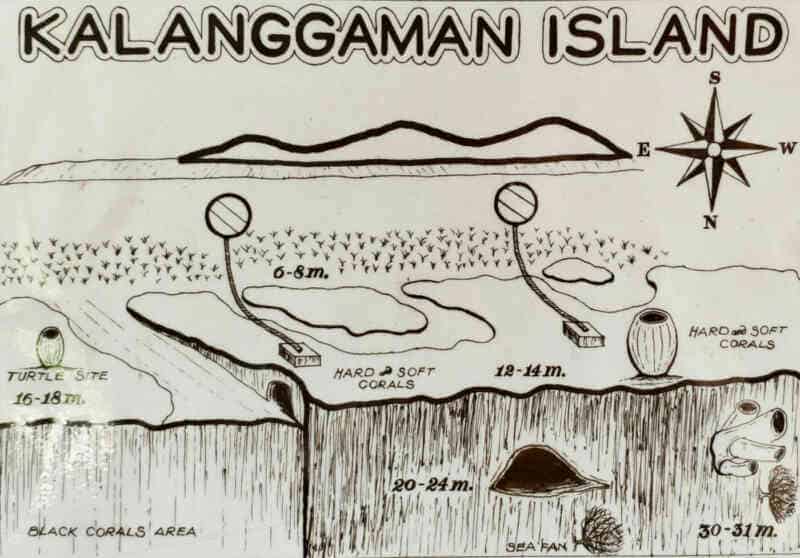
Min. Depth: 5 meters
Max. Depth: 35 meters
Kalanggaman Island is a small white beach island with only palm trees around, surrounded by crystal clear water. Diving here is like a wall dive covered with a coral growth, like large phymy fan where there is mostly a residence of pygmy seahorses.
A large gorgonian fan, and giant barrels sponges in the wall, large black corals where there is always a longnose hawkfish. Down the drop-off have schools of snappers, fusiliers, and tuna. And also a normal residence of green turtle.
We normally offer barbeque on this trip during surface interval time. The island also provides a perfect place for non-divers, that just like to chill and relax and enjoy the view of the paradise.
The island also provides a perfect place for snorkellers and dolphins are often seen on the way there or back. Best visibility here most of the time.
Bugtong-Bato
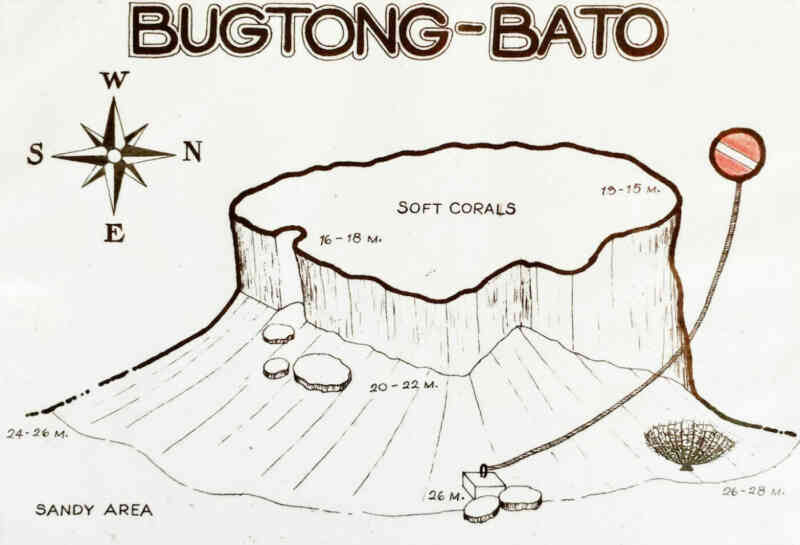
Min. Depth: 15 meters
Max. Depth: 30 meters
Bugtong-Bato is a single rock that the top lies on 15 meters and a wall that goes down between 27-30m. This is a site that shapes like an updside down cup which is about 25-30m diameters.
The entire rock is covered of soft corals and feather stars of different colors and this is good for macro dive. We call this also as a new Nudibranch City aside from Gato island, since we can able to find here a lot of different species of batfishes and squids and of course giant frogfish here is always presents.
The site is good for multilevel diving and the depth of the divesite is suitable only for more expereinced divers, using Nitrox is highly recommended.
Ubang-Bato
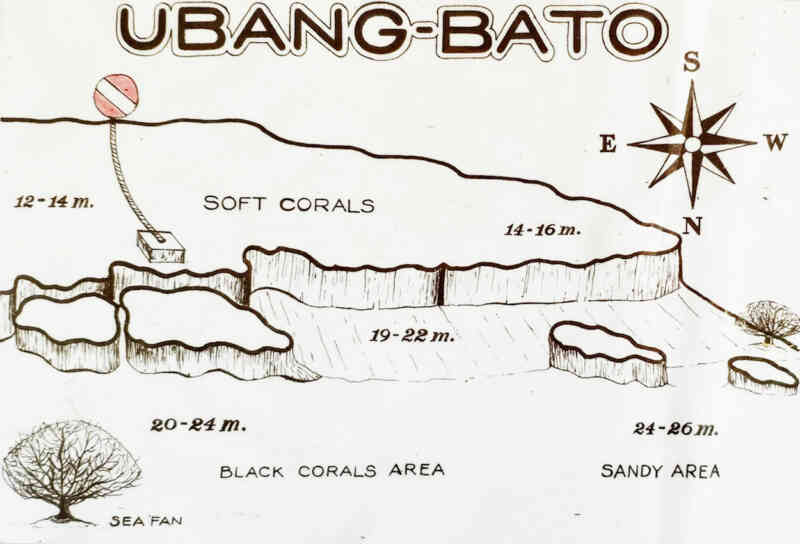
Min. Depth: 12meters
Max. Depth: 25 meters
Ubang-Bato is a sloping reefs that starts at 12m joining a mini wall that reaches down to 20m with sandy bottom continuous sloping down to 30m that stretches outward. The entire dive site is covered with black corals and sponges, soft and leather corals, Nudibranches, frogfish & pipefish can be seen throughout the entire site. Currents can be mild to strong.
Lapus-lapus

Min. Depth: 6 meters
Max. Depth: 23 meters
Lapus-lapus located at the North west tip of Malapascua island. The site with its corals heads and overhangs is a diverse underwater garden of soft and hard corals, much of it in pristine condition.
This plant like animals and the tiny crabs, shrimp and nudibranches that live along them make this great location for observing and photographing on the macro scale.
Also seen here are giant and painted frogfish, the not so smashing mantis shrimp, cuttlefish, lion fish and a varieties of soft corals. This site is relatively easy and very photogenic site to dive.
Gato island
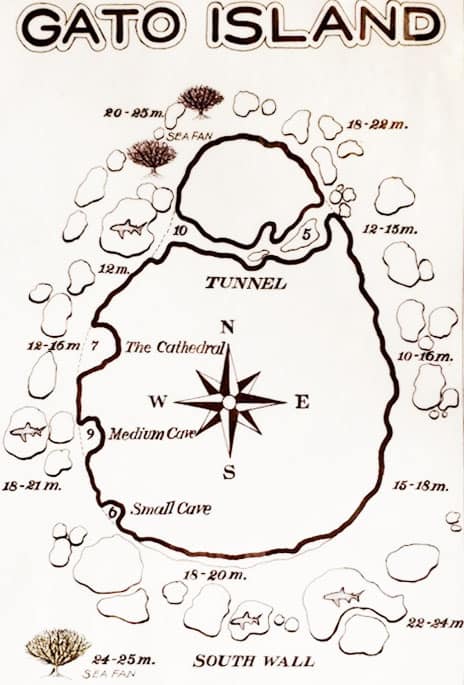
Min. Depth: 5 meters
Max. Depth: 25 meters
Gato island is one of the most famous dive site around Malapascua. A Marine Protected Area, and selected to be the Philippines “First Shark & Ray Sanctuary”.
A marine reserve and also sea snake sanctuary. It has at least four different dive sites around the island with a huge diversity of marine life. Perfect for multi-level diving, a sloping from 5m to 25m covered of combination soft and hard corals.
Mostly small and big rocks formations underwater. A paradise for avid photographers, this site offers a great opportunity for both macro and big fishes.
At all sites you can see such things as banded sea snakes, mating cuttle fishes, ghostpipe fishes, seahorses, schools of bigmouth mackerel, lionfishes, scorpion fishes, porcupine fishes, smashing mantis shrimp, moray eels, frogfishes & varieties of nudibranchs.
There are plenty of caves and overhangs, perfect habitats of a white-tip reef sharks. Mostly we give guarantee seeing white-tip reef sharks on this dive. The tunnel of 25-30 meters long where you can swim through is abundant of soft & hard corals and polyps.
Pantaw-pantaw
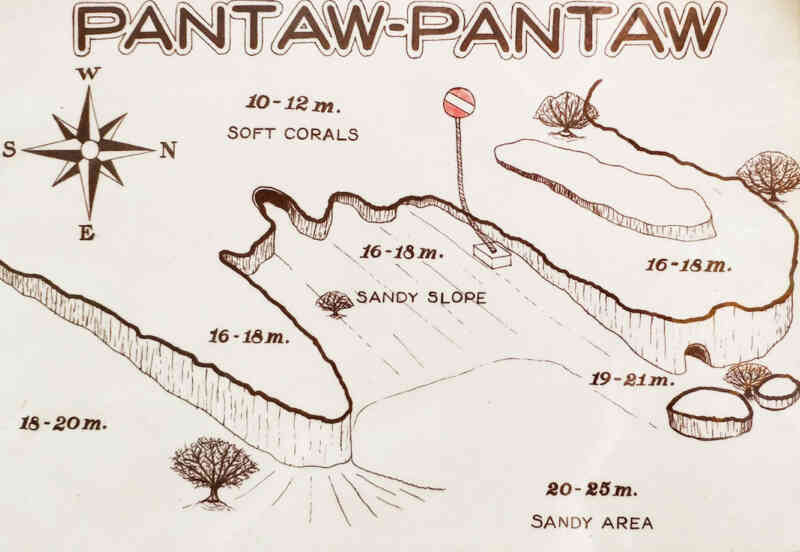
Min. Depth: 12 meters
Max. Depth: 25 meters
Pantaw-pantaw is an interesting reef that is separated by a unique underwater “sand dune” where weird gobie eel type fish can be seen frolicking in the sand.
The first half of the reef is where you look for the pygmy seahorses living amongst the many different sea fans and flamboyant cuttlefish hiding among the rubble on the sandy bottom.
After the sand dune the soft corals come to alive. The mini wall is covered of different soft corals and feather stars in different colors. The variety of marine life including frogfish, scorpion fish, morays and abundance of the brightly coloured reef fish. A busy dive site and it it best for small group and more confident divers
General information about Malapascua
The best overall time to dive is usually between January to April.
However, it is possible to dive in Malapascua all year round, though the weather can sometimes be rough in November and December.
April to May (Dry season)
August to November (Wet Season)
Visibility: On most dive sights the visibility is between 15m-30m during the year, aside from Nov – Jan where it reduces quite drastically to approx. 5 – 10m.
Water Temperature
Usually between 27°C – 30°C
Lowers to 25°C in December – February
Transportation
The closest airport to Malapascua is Mactan–Cebu International
Private transfer from Cebu City: Between 2000-3000 PHP/£30-£40 /U$40-U$60 and takes about 3 – 4hours. Easily arranged through your dive centre or hotel.
Bus: Northern Bus Terminal in Cebu and take either a Yellow Ceres or Rough Riders bus for approx. 150 – 200 PHP (£2/$3) They run approx. every 20 – 30mins. The last bus from Maya is 6pm, though the buses to Maya run 24 hours (but the ferries to Malapascua do not.)
Ferry: You need to take a ferry from Maya. The public ferry costs 100PHP (£1.40/U$1.90) and takes around 30 minutes. If you want a porter to carry your luggage on to the boat you need to pay another 20PHP. If you arrive in Malapascua in low tide you will also have to pay 20PHP for a smaller boat to the island. They may also charge you another 20PHP for your luggage. The ferries will usually wait till they are full to make the crossing. There is no fixed timetable, aside from the last trips at approximately 5pm. The ferries may also be cancelled due to bad weather. If this happens there are guesthouses in Maya.
Private ferry: This will cost around 1,700 PHP and can often be arranged in advance with your Dive centre/hotel.

